Have you come across a 1938 Lincoln Wheat Penny in your spare change? If so, you’re probably curious about its background—and more importantly, how much it might be worth.
No worries—we’ve got all the details you need. Below, we’ll break down the value of the 1938 penny based on its condition, explore what affects its price, and share some cool facts about this classic coin.
Let’s dive in!
1938 Penny Value Chart
Circulating Coins (Business Strikes)
| Mint Mark | MS60 | MS63 | MS65 | MS68 |
|---|---|---|---|---|
| No Mint Mark (Philadelphia) | $7 | $12 | $28 | $14,250 |
| D (Denver) | $6 | $12 | $22 | $11,500 |
| S (San Francisco) | $8 | $15 | $28 | $15,000 |
Proof Coins (Collector’s Editions)
| Grade | PR60 | PR63 | PR65 | PR67 |
|---|---|---|---|---|
| Brown (BN) | $20 | $65 | $135 | – |
| Red-Brown (RB) | $37 | $100 | $150 | $1,300 |
| Red (RD) | $50 | $125 | $185 | $1,500 |
| Cameo (RD CAM) | – | $275 | $950 | $17,500 |
Note: The highest values are for red (RD) coins, which retain their original copper color and are considered the most desirable by collectors.
History of the 1938 Penny
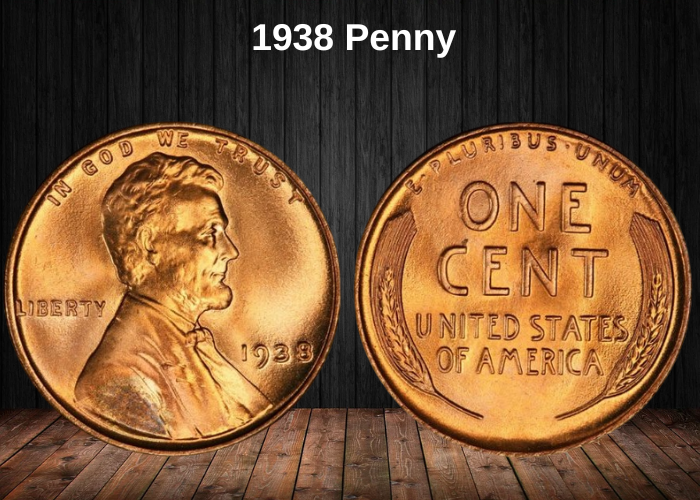
At first glance, the 1938 Lincoln penny may look nearly identical to the one you carry in your pocket today. That’s because the portrait of Abraham Lincoln on the obverse (front) is still the same design used on modern cents.
This familiar image is why these coins are often called “Lincoln Cents.” But they’re also known as “Wheat Pennies” due to the two wheat ears that frame the reverse (back) of the coin.
The Lincoln penny was first introduced in 1909, making its portrait of the 16th U.S. President the longest-running design ever used on a U.S. coin.
It was a historic shift in American coinage. Before 1909, U.S. coins didn’t feature actual people—only allegorical figures like Lady Liberty. That changed to honor the centennial of Lincoln’s birth. As public enthusiasm grew, the U.S. Mint approved the idea of featuring the beloved president on a coin.
Renowned sculptor Victor David Brenner was chosen to design the new cent. He began his work in January 1909, and the first Lincoln cents were released in July that year. If you examine the obverse of the 1938 penny, you’ll find Brenner’s initials, V.D.B., at the base of Lincoln’s shoulder. However, the very first 1909 coins featured those initials on the reverse side.
That initial placement caused controversy—critics argued the lettering was too large and self-promotional. Production halted briefly, and rather than rework the design in time for the release, the Mint simply removed the initials. They didn’t reappear until 1918, this time placed more discreetly on the front.
In 1938, business strike Wheat Pennies—coins made for general circulation—were minted in Philadelphia, Denver, and San Francisco. That same year, the Philadelphia Mint also produced a limited number of proof coins specially made for collectors.
Features of the 1938 Penny
The Obverse of the 1938 Penny
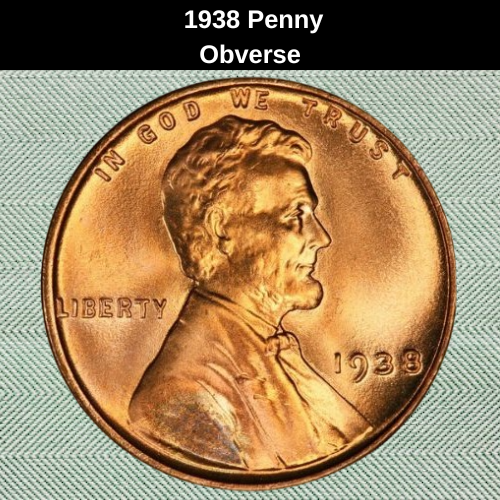
The 1938 Lincoln penny features a portrait of Abraham Lincoln that closely resembles the one seen on today’s cents. He’s shown in right-facing profile.
The coin’s designer, Victor David Brenner, once shared that he imagined Lincoln as if he were reading to a child, which he felt captured a warm and animated expression.
Since Lincoln had passed away long before the coin was made, it’s believed Brenner based his design on a photograph taken by Matthew Brady, where Lincoln is pictured with his son.
Above Lincoln’s head, the coin bears the motto “IN GOD WE TRUST.” The word “LIBERTY” appears on the left side, while the date is shown on the right.
If your coin has a mint mark, it will appear just beneath the date. A “D” means it was made in Denver, an “S” stands for San Francisco, and if there’s no mint mark, it came from the Philadelphia Mint.
The Reverse of the 1938 Penny
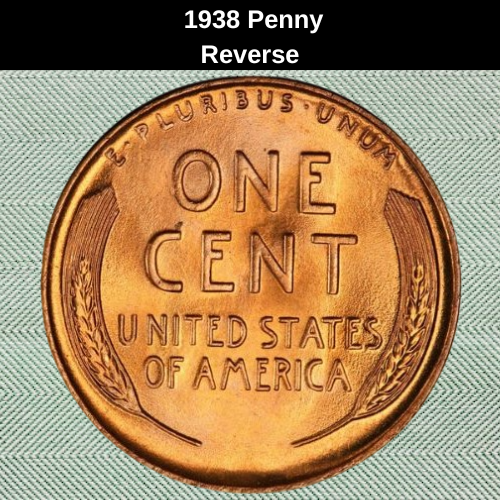
The reverse side of the 1938 penny displays a design featuring two stalks of durum wheat, one on each side, arching upward along the left and right edges. These wheat ears frame the coin’s denomination and the inscription “United States of America.”
Positioned at the top and curving along the rim is the Latin phrase “E PLURIBUS UNUM,” which translates to “Out of many, one.” This motto represents the idea of the United States being formed from a collection of individual states.
Just like the front of the coin, this reverse design was created by Victor David Brenner. His initial idea was to use a tree branch as the main image, but that concept was rejected due to its resemblance to French coins of that era.
Additional Details About the 1938 Penny
The 1938 Lincoln cent is composed primarily of bronze, with 95% copper and the remaining 5% being a blend of tin and zinc. The coin weighs 3.11 grams and has a diameter of 19 millimeters.
Due to its high copper content, the color of each coin can differ greatly. Copper naturally changes in appearance as it ages or is exposed to air and handling, shifting from a bright red to various shades of brown. For this reason, it’s extremely rare to find a red-toned coin that has been circulated.
In the world of collecting, red pennies are more desirable and typically command higher prices than their brown counterparts. Grading services use very specific standards to classify a coin’s color.
To qualify as “red” (RD), the coin must display red coloring on at least 95% of its surface. If the red is visible on between 5% and 95%, the coin is labeled “red-brown” (RB). Coins with less than 5% red fall into the “brown” (BN) category.
If you want to learn how to accurately determine the color grade of your 1938 penny, check out this YouTube tutorial by Len Here.
1938 Penny Grading
Here is the grading scale used for the 1938 penny:
| Grade | Description |
|---|---|
| 1 | Basal State-1 |
| 2 | Fair |
| 3 | Very Fair |
| 4, 5, 6 | Good |
| 7, 8, 10 | Very Good |
| 12, 15 | Fine |
| 20, 30 | Very Fine |
| 40 | Extremely Fine |
| 50 | About Uncirculated |
| 60 | Mint State |
| 65 | Mint State |
| 70 | Mint State |
Important note: To determine the exact value of your 1938 penny, it’s essential to use a grading guide. This step will ensure you understand the condition of your coin and how it impacts its price.
If you’d like to go deeper into how to assess a coin’s grade or need further clarification, let me know!
1938 Penny Value Guides
1938 No Mint Mark Penny Value
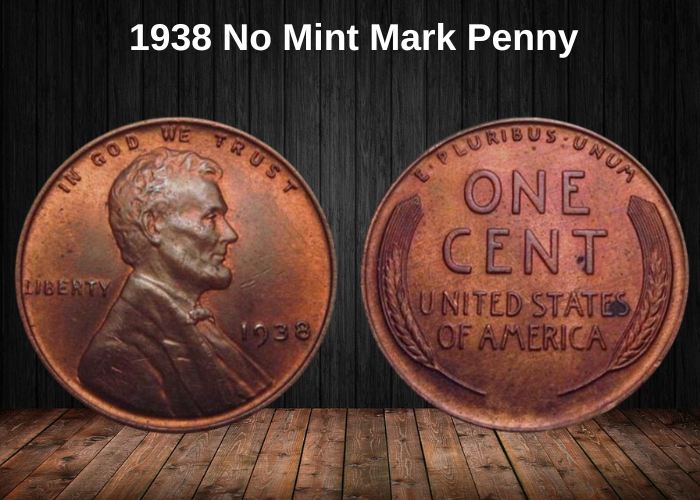
In 1938, nearly 157 million pennies were struck at the Mint facility in Philadelphia. Today, the PCGS estimates that around 15 million of those coins still exist.
- Circulated condition coins are generally worth just a few cents unless they feature an interesting Mint error.
- Mint state coins (graded 60 and above) are worth significantly more, with red coins being particularly desirable.
Here’s how the 1938 no mint mark penny values break down:
- MS60: Around $7
- MS63: Around $12
- MS65: Around $28 (the lowest grade for a coin to be termed a “gem”)
- MS66: Around $38
- MS66+: Around $80
- MS67: Around $175
Once you reach MS67+, the price jumps to $900.
However, the rarity increases rapidly from this point. Only two MS68 red coins have been certified, and each is valued at a remarkable $14,250.
1938 D Penny Value
In 1938, just over 20 million pennies were struck at the Denver Mint, much fewer than in Philadelphia. Today, it’s estimated that around 2 million of those coins still exist.
The survivors from Denver are generally of better quality than their Philadelphia counterparts. While only 9,000 red 1938 pennies from Philadelphia are believed to remain, the estimate for Denver coins is around 10,000.
Here’s how the 1938 D penny values break down:
- Circulated condition: These coins are typically worth only a few cents unless they have a Mint error.
- Uncirculated condition:
- MS60: Around $6
- MS65: Around $22
For the best-quality coins, values peak at MS68. There have been eight Denver 1938 pennies certified at this level, and PCGS values them at $11,500 each.
1938 S Penny Value
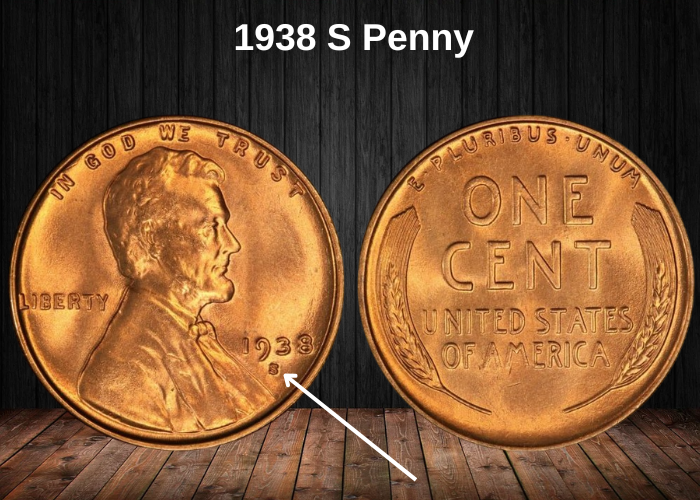
The San Francisco Mint produced the fewest 1938 pennies, with a total mintage of around 15 million. However, the number of surviving red coins in mint condition is higher than those from either Denver or Philadelphia, with an estimated 16,000 remaining.
Here’s how the 1938 S penny values break down:
- Circulated condition: These pennies are usually worth no more than their face value, unless they have a Mint error.
- Mint state:
- MS60: Starts at $8
- MS63: Around $15
- MS65: Around $28
While there are more mint state survivors with the “S” mint mark, no exceptional examples have been discovered so far.
The highest grade awarded to any 1938 S penny is MS67+, with 66 coins certified at that level. These are valued at around $950 each.
1938 No Mint Mark Proof Penny Value
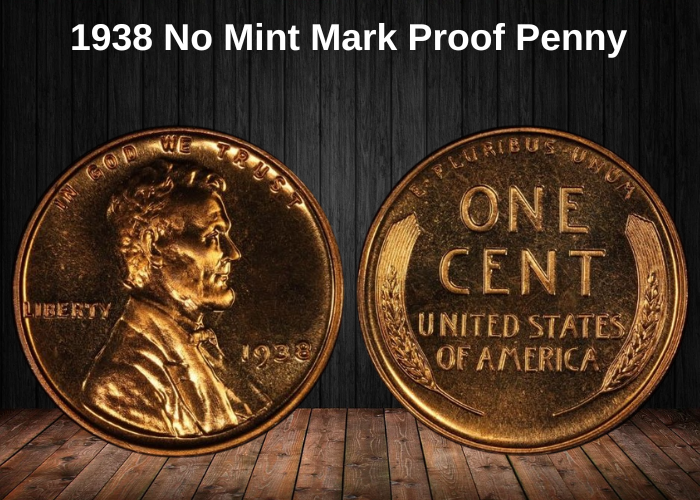
In 1938, the Philadelphia Mint struck 14,734 proof pennies. These low-mintage coins are highly desirable, especially among collectors.
- Brown proof coins are valued as follows:
- MS60: Around $20
- MS65: Around $135
The low mintage of proof pennies from 1938 makes them collectible in any color, and their value rises significantly with higher grades.
Rare 1938 Penny Errors List
1938 S/S/S Penny, Re-punched Mint Mark
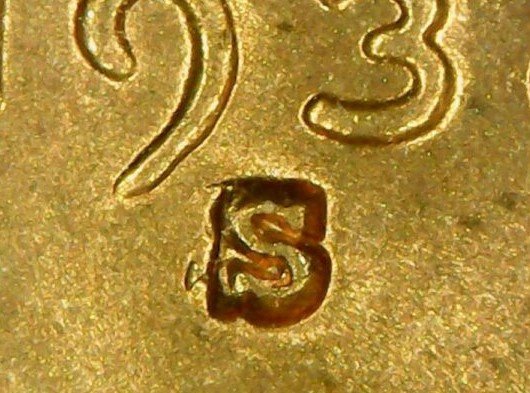
Some of the 1938 pennies struck in San Francisco have a repunched “S” mint mark, with some having the mint mark punched three times. If you look closely, you’ll notice the shadows of earlier “S” mint marks beneath the final version. There’s also a second repunched “S” mint mark error with two “S”s.
- Triple “S” mint mark error:
- A brown coin graded AU58 (about uncirculated) sold for $100 at auction in 2020.
- The finest known grade is MS67 red, with six coins certified at this level, valued at $650 each.
This error is subtle and difficult to spot without a microscope or loupe.
1938 D/D Penny, Re-punched Mint Marks
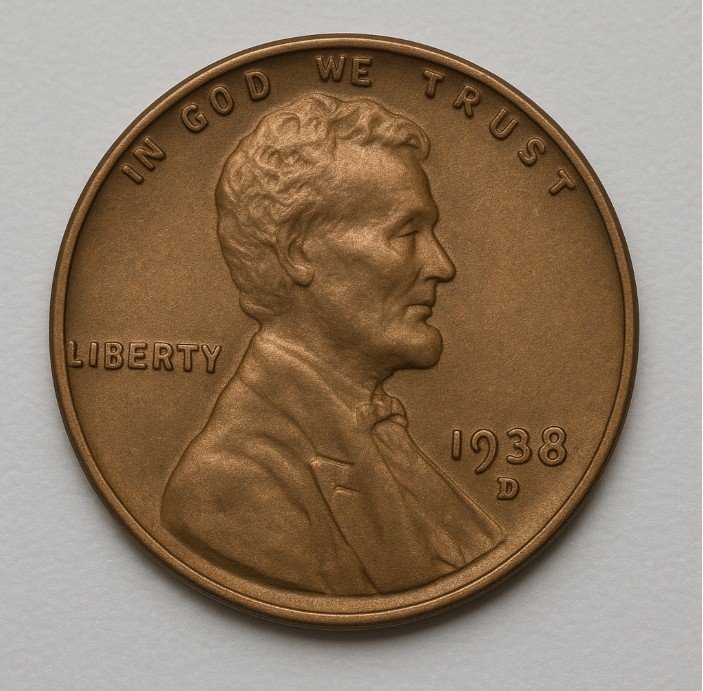
Re-punched mint marks were not exclusive to the 1938 pennies struck in San Francisco; Denver coins also feature some examples with two mint marks, one directly beneath the other.
- A brown penny with this error, graded AU50, sold for $112 on eBay in 2018.
- PCGS values a red coin with this error:
- MS60: $70
- MS65: $150
- MS66+: $750
For more information on these errors, you can watch a YouTube video from Couch Collectibles showing examples.
Where to sell your penny?
Now that you know the value of your penny, you might be wondering where to sell it. Don’t worry: here’s a guide to some of the best online platforms where you can easily sell your coins, along with their advantages and disadvantages.
Discover the best platforms for selling coins online (pros and cons).
FAQs
1. How does the 1938 Wheat Penny fit into the overall context of the late 1930s in the U.S.?
The 1938 Wheat Penny was minted during a period of economic recovery in the U.S. following the Great Depression. By this time, the country was beginning to experience more prosperity, and the demand for currency increased as businesses flourished. The 1938 penny was part of the last years of the Wheat Cent series, just before the introduction of the Lincoln Memorial design in 1959. This was a transitional time in U.S. coinage history, with collectors starting to look ahead to future changes.
2. What were the mintage numbers for the 1938 Wheat Penny, and how does that impact its rarity today?
The 1938 Wheat Penny had a high mintage across all U.S. mints, making it one of the more common coins in the Wheat Cent series:
- Philadelphia (no mint mark): 317,000,000
- Denver (D): 28,170,000
- San Francisco (S): 26,430,000
Though the mintage was high, the 1938-S penny is less common in uncirculated condition, making it more valuable than the Philadelphia and Denver versions. High-quality uncirculated examples of the 1938 penny, particularly MS65 RD and higher, can still command a significant premium.
3. What are the most valuable grades for the 1938 Wheat Penny?
The 1938 Wheat Penny is typically affordable in circulated grades:
- Good to VG (very good): Around $1–$3
- Fine to Very Fine: Around $3–$10
- Extremely Fine: Around $10–$30
However, coins in uncirculated grades are far more valuable:
- MS65 RD: Around $75–$100
- MS66 RD: Around $200–$300
- MS67 RD: Can exceed $1,000, depending on eye appeal and condition
The 1938-S is particularly valuable in higher grades, especially in MS66 RD or better.
4. Are there any known errors or varieties of the 1938 Wheat Penny?
While the 1938 Wheat Penny doesn’t have as many widely recognized major varieties as some earlier years, collectors still look for:
- Re-punched mint marks (RPMs)
- Die cracks or cuds
- Off-center strikes
- Double die obverse (DDO) errors (rare but notable)
Coins with these errors, especially from the 1938-S or 1938-D, are valuable to error collectors and can command premiums in the market.
5. How does the strike quality of the 1938 Wheat Penny affect its value?
The 1938 Wheat Penny varies in strike quality depending on the mint. Coins from Philadelphia are often well-struck, making them more common in high grades. However, 1938-S and 1938-D coins sometimes exhibit softer strikes, particularly in areas like Lincoln’s portrait and the wheat stalks, reducing their overall value in lower grades. Higher-grade coins with sharp details and minimal marks are highly desirable and can fetch significantly higher prices, particularly when in Red (RD) condition.
6. How does the 1938 Wheat Penny compare in value to other years in the Wheat Cent series?
The 1938 Wheat Penny is more common than many earlier years, but it remains an essential coin for set collectors. While not as valuable as some rarer dates (like the 1909-S VDB or 1914-D), the 1938 penny has held steady value, especially in high grades. The 1938-S is particularly sought after by collectors in higher MS65 RD or better grades, though it is not as expensive as some of the rarest coins in the series. In general, the 1938 penny is affordable for most collectors but can still be a solid investment when seeking higher-quality examples.
7. What makes the 1938 Wheat Penny a good coin for collectors to invest in?
The 1938 Wheat Penny is a good investment for several reasons:
- High mintage: It’s easy to find in circulated grades, but high-grade examples in MS65 RD or better are much rarer.
- Desirability: It remains popular among collectors due to its place in the Wheat Cent series and its historical context in the U.S.
- Market stability: The 1938-S in high grades has shown steady demand, and as more collectors aim to complete high-quality Wheat Cent sets, this coin’s value is likely to appreciate.
With its relatively high availability but scarcity in premium grades, it is an excellent coin for collectors who want to build a set with a mix of accessibility and potential for future growth.



















































